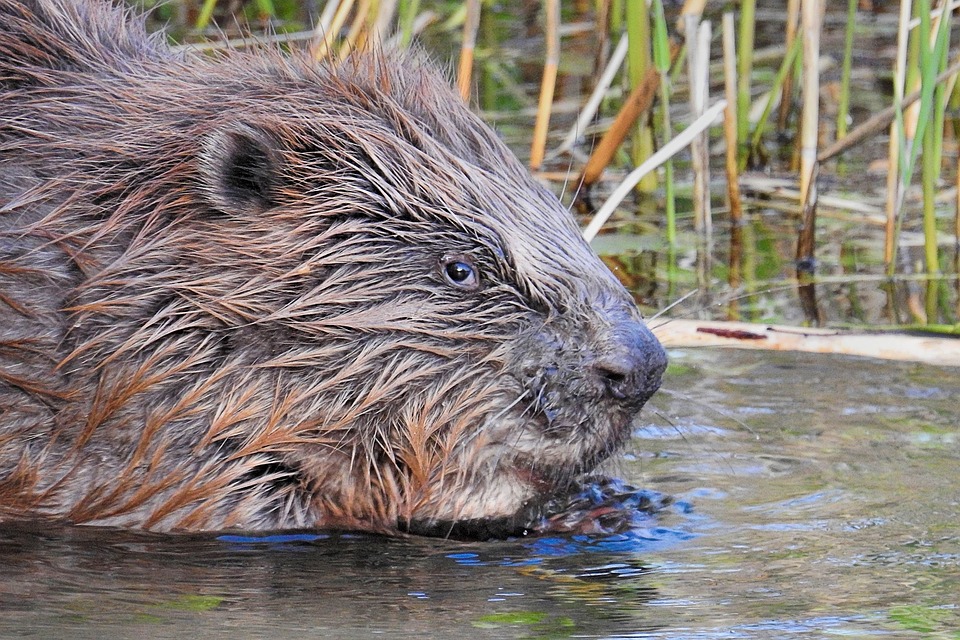The Beaver’s Castle: Exploring the Unique Architecture of Their Lodges
Beavers are known for their incredible engineering skills, and their lodges are a testament to their ingenuity. These structures, often referred to as "castles," are the beavers’ homes, built in the middle of lakes, rivers, and wetlands. In this article, we’ll delve into the fascinating world of beaver architecture and explore the unique features of their lodges.
A Water-Based Fortress
Beavers’ lodges are constructed from a combination of sticks, branches, and mud. They build their homes in a central location, often surrounded by water, to protect themselves from predators. The structure is designed to be both waterproof and stable, with a complex system of underwater tunnels and chambers.
The exterior of the lodge is typically covered in a thick layer of mud, which helps to insulate the interior and protect it from the elements. The entrance is usually located at the waterline, with a small tunnel leading to the interior. The lodge’s walls are sturdy, with a network of branches and sticks that provide additional support.
Innovative Engineering
One of the most impressive aspects of beaver lodges is their ability to withstand the elements. Beavers are incredibly resourceful, using a variety of techniques to keep their homes dry and secure. For example, they build their lodges on top of a thick layer of aquatic plants, which helps to prevent erosion and keeps the structure stable.
The lodge’s design also allows for maximum storage space. Beavers store branches, mud, and other building materials in the lodge’s interior, creating a cozy and snug environment. They even build separate chambers for food storage and latrines!
The Importance of Beaver Lodges
Beaver lodges play a crucial role in the ecosystem, providing habitat for a variety of plants and animals. The lodges’ intricate architecture creates a unique environment that is both challenging and rewarding for other creatures to inhabit.
For example, the lodge’s tunnels and chambers provide shelter for fish, frogs, and other aquatic animals. The surrounding area is also home to a variety of plant species, which thrive in the sheltered environment created by the lodge.
Frequently Asked Questions
Q: How do beavers build their lodges?
A: Beavers build their lodges using a combination of sticks, branches, and mud. They collect these materials from the surrounding area and use them to construct the lodge’s walls and roof.
Q: How long do beavers take to build their lodges?
A: Beavers typically take several months to build their lodges, depending on the size and complexity of the structure.
Q: Can humans visit beaver lodges?
A: While it is possible to visit beaver lodges, it is essential to do so in a responsible and respectful manner. Beavers are sensitive to human activity, and it is crucial to avoid disturbing their homes.
Q: Do beavers use their lodges for protection?
A: Yes, beavers use their lodges for protection from predators, such as coyotes, wolves, and bears. The lodges’ design and construction provide a safe and secure environment for the beavers.
Q: How do beavers maintain their lodges?
A: Beavers continually maintain their lodges by adding new materials, repairing damaged areas, and replacing worn-out structures. They are diligent about keeping their homes in good condition to ensure their safety and well-being.
Image:
[Image of a beaver lodge, surrounded by water and aquatic plants. The lodge is constructed from sticks, branches, and mud, with a small tunnel leading to the interior.]
As we explore the unique architecture of beaver lodges, we are reminded of the importance of respecting and preserving these incredible structures. Beavers are incredible engineers, and their homes are a testament to their ingenuity and adaptability. By learning more about beaver lodges, we can better appreciate the beauty and complexity of the natural world.



